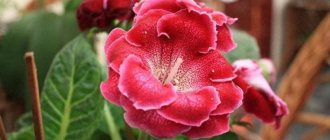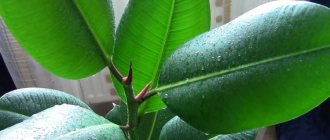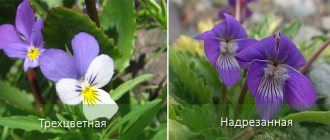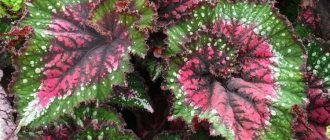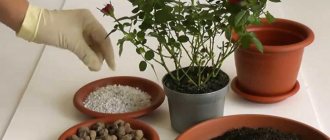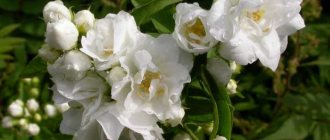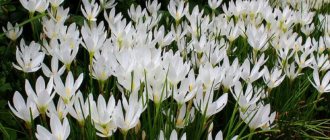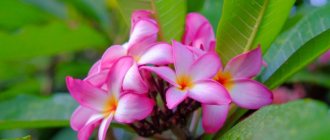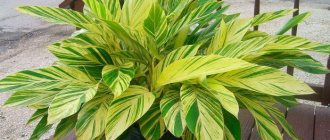If you want to decorate your home with bright flowers that will sparkle in the damp and cold seasons, then, undoubtedly, you should pay attention to the amazing Anthurium plant. Its homeland is the tropical forests of Central and South America. Anthuriums that require attention to care are ready to bloom all year round. They are not afraid of stressful situations - after them, plants quickly recover.
Botanical description
Anthurium is the most widely represented genus in the family Araceae. It covers up to 900 plant species. They can be herbaceous evergreens or vines. They also include epiphytes, which grow in the tropics on trees and are distinguished by aerial roots that hang to the ground. Anthuriums also include lithophytes that grow on rocks and stones.
The flower is distinguished by a variety of leaf blade shapes. It can be heart-shaped, spade-shaped, round or have a dissection. Growing in natural conditions, the plant turns its leaves towards the sun's rays. Blooming Anthurium looks especially beautiful.
The flowers come in a wide variety - you can find dense varieties of red, white, purple, burgundy and green shades. Some varieties have multi-colored bracts. The inflorescence has the shape of a spadix with flowers in the form of a club, cone, spiral or ball. They are located closely on the cob in diamonds or squares.
Flowers emit a variety of scents. It can be a subtle aroma or a strong fragrance. The smell can be pleasant or foul. Flowering lasts the whole year. Flowers remain on the plant for up to 1.5 months.
If you pollinate a flower, it produces yellow or orange berries with 2 seeds. The decorative quality of Anthurium deteriorates over time, which is manifested in a decrease in the size of the leaves and dryness of the trunk. In this case, the plant must be rejuvenated.
The following types of flowers are grown as indoor plants:
- Anutrium Andre is a large flower with heart-shaped leaves. The petioles are long, and aerial roots are present on the stems.
- Anthurium Scherzer - the epiphyte has short stems up to 40 cm. The leathery leaves have a dark green tint, and black dots can be seen on both sides. The bedspread has a red tint.
- The ornamental plant Anthurium magnificent has become famous - a low-growing flower with green leaves decorated with white veins.
Types of plants with red, white, pink and other flowers
According to the latest data, today there are about 1,500 species of anthurium.
Andre
Features of the species: short trunk, leaves with an oval-lanceolate heart-shaped base, long petioles with bends. The ear is tail-shaped and yellowish in color. The bedspread is also heart-shaped, the color varies from soft pink to dark burgundy pigment.
Scherzer
Features of the species: a spirally twisted cob and a large red-orange veil. It has a shortened stem and leathery leaves of a rich green color, often linear in shape. Greenhouse plant .
Crystal
Features of the species: deep green color of leaves with lighter veins in the form of an ornament. More often the leaves are large and spreading. The cob has a lemon and sometimes pale purple color. This species is valued for its luxurious foliage and simple vein patterns.
The following are the most famous varieties of anthurium, which are classified by color.
- Reds . "Dakota" (Dakota), "Sierra Magic" (Sierra Magic), "Turenza (Perfectred)" (Turenza). Red-green: Anthurium adrianum "Baby Boom". Least popular: "Almera", "Bugatti Veyron", "Champion Red", "Dynamite Red" ), “Red King” (Red King, red king), “Royal Champion” (Royal Champion), “Success Red” (Success ed).
- White . “Champion White” (White champion, white champion), “Sumi” (Sumi). White and pink: “Princess Amalia Elegance” (Princess Amalia Elegance).
- Pink . “Joli” (Jolie), “Lady Love” (Lady Love), “Pink Alabama” (Pink Alabama), “Pink Champion” (Pink Champion, pink), “Picasso Pink” (Picasso pink, pink), “Pink King "(Pink King), "Pink Queen" (Pink Queen).
Illumination
The plant prefers bright but diffused light. It can be placed either on the south side of the house or with windows facing east or west. The shade resistance of the flower allows it to grow on the north side, but you will not achieve flowering.
Winter lighting is required for bud formation. On windows with a southern orientation, flowering is possible even in winter. In hot summers it should be removed from direct sunlight.
Features of Anthurium propagation
“Male Happiness” is propagated by vegetative methods and seeds. The latter method is not used by amateur flower growers, since such planting material loses its viability the very next day after collection. Therefore, propagation of anthurium by dividing the bush (stem shoots) and apical cuttings is preferable.
Step-by-step instructions for propagation by cuttings
- Cut the apical cuttings with two leaves, the length of the parts should be 12–15 cm. Shorten large leaf blades by half. Cut the bottom part at an angle.
- Make a soil mixture of peat and sand, taken in equal proportions. Pour the substrate into a shallow bowl and moisten it.
- Dip the lower sections of anthurium cuttings into Kornevin or another root formation stimulator and plant them in the prepared soil at an angle, deepening them approximately 5 cm.
- Keep the plantings at a temperature of 24–25 degrees, moisten the soil daily and spray the cuttings.
- Planting material takes root very well under room conditions. Within a month, the cuttings will grow roots.
- Place in a separate container and care for them as you would for adult anthuriums.
Anthurium apical cuttings root very quickly
Dividing the bush is the best method of propagation
“Male Happiness” quickly grows lateral shoots with its own roots. They can be used to propagate the flower. Usually the division procedure is carried out simultaneously with transplantation. For this:
Remove the mother plant from the soil and wash the roots. Carefully separate the suckers with a sharp, clean knife. Sprinkle all sections with crushed activated carbon. Plant the resulting divisions in separate containers with drainage and special soil. Moisten and place in a warm place.
From one mother bush you can get several divisions, from which new specimens of anthurium will grow.
Watering rules
To moisten the soil, watering is necessary at regular intervals of 3-4 days. Warm water is preferred. Winter watering can be reduced to once every 7 days. The flower is demanding on proper watering - you should not overdry the soil, but you should not create stagnation of moisture.
After watering, you need to wait and remove excess water. Do not use lime-type water or low temperature water.
Characteristics of a houseplant
- Type: ampelous.
- Flower/fruit color: white, pink, orange-red, bright red, burgundy.
- Leaf color: green, yellow-green.
- Sun requirement: diffused lighting.
- Size: up to 60 cm in height.
- Flowering: When using additional lighting - all year round.
- Aroma: from barely perceptible to sharp.
Anthurium is a beautiful and bright flower with a cheerful mood! Keeping it in the house is considered a good omen. At any time of the year, anthurium will give positive emotions and a charge of optimism.
In order for the plant to please its owner, it is necessary to monitor its health and replant it on time. Simple care recommendations make it possible to purchase a luxurious specimen not only for experienced gardeners, but also for novice indoor plant lovers.
Soil requirements
To plant a plant, a special mixture is required, including humus, unsifted leaf soil, peat and sand in a ratio of 2:1:1:0.5. Broken brick is added to the soil; it is also advisable to add cones, moss, and charcoal.
The use of coarse components in a volume of up to 15% of the total soil increases the movement of moisture and air in the substrate. Slightly acidic soil with a pH value of 5.5-6.5 is considered preferable.
- Advantages of Gardena gardening equipment
Bathhouse made of 6x6 timber
- Ktenanta - types, cultivation characteristics and instructions for care at home. 110 photos of plants
Conditions for lush flowering
If conditions are favorable, anthurium can bloom almost all year round. If there is no flowering, it means that the grower made some mistakes:
- If the dormant period is not observed, the bush may not bloom. In order for a flower to lay flower buds for next year, it needs coolness in winter. The desired temperature is about +15-16 degrees. It is also important to reduce watering for the winter.
- In winter and autumn you should never feed this flower. The introduction of nutrient mixtures can only begin in February.
- If a flower lacks natural light, it may simply not bloom. This is especially important in winter, when daylight hours are short. It is necessary to illuminate the plant additionally with phytolamps.
- If the flowerpot is chosen incorrectly, the anthurium may also not throw out its buds. In a large pot, the flower may not set buds. Until the roots fill the entire volume of the flowerpot, the anthurium in an overly spacious pot will not bloom. In this case, transplantation into a tighter pot is required.
- In old soil, anthurium will feel very bad, because the old soil is poor in nutrients. Every year you need to update the substrate so that the plant has enough nutrition to set and force buds.
- Too low a temperature can also prevent the anthurium from blooming. Starting in February, the temperature of the plant begins to gradually increase.
- During the flowering period, it is necessary to cut off all wilted buds.
Transplantation
For abundant flowering, regular replanting of the plant is required. Young flowers are replanted annually in the spring, and adults - once every 2 years. The container is taken shallow. When transplanting, fresh substrate is added. You can use soil for aroids or orchids. A drainage pad is laid out at the bottom. When transplanted, the children are seated.
Care
In order for anthurium to please the eye with its bright blooms and impeccable health, it is necessary to properly care for it. Despite the fact that the plant is exotic, keeping it in an apartment should not cause any difficulties.
Temperature and humidity
Depending on the time of year, anthurium tolerates ambient temperatures from 18 - 25℃ .
In winter, the plant is additionally warmed with a lamp. In summer, avoid drafts and direct sunlight. Anthurium is a moisture-loving plant, so conditions of high humidity are comfortable for it. It is ideal if there is a humidifier in the room.
In hot weather, the home flower is sprayed 2-3 times a day . It is not the plant itself that should be irrigated, but the air around it. At temperatures above 26℃, you need to provide the anthurium with a cooler place until the heat subsides.
To moisten the pot on a pallet, cover it with expanded clay, which is moistened daily. From time to time, the plant is cleaned of dust by gently wiping the foliage with a damp cloth, and the anthurium can also be given a cool shower.
Important! You should pay close attention to the water procedure, since water getting on the flower and cob is extremely undesirable. The appearance of dark spots is the result of improper irrigation of the flower.
After a shower, carefully collect the remaining moisture from the plant leaves with a sponge.
Watering
In the warm months of the year, the flower is watered once every 2 - 3 days . In winter, the amount of watering is reduced to once a week. Anthurium loves abundant watering, but it is important not to overdo it to prevent excess moisture in the root system. The plant is ready to be moistened when the top layer of soil in the pot has already dried out. The lower the room temperature, the less often watering should be done.
Water for these purposes must be settled. Within a day, the water is cleared of chlorine and other heavy substances. The ideal watering would be soft spring or rain water, provided the environment is environmentally friendly. Bottled water is unsuitable for irrigation and watering plants, as it does not contain any nutrients.
Video about watering anthurium:
Lighting
In order to choose the ideal place for anthurium, you should remember that this is a tropical plant.
The flower loves diffused light and feels comfortable in almost any lighting, except direct sunlight, which can cause burns.
You should also avoid shady areas. Lack of lighting can negatively affect the life of the plant. The best option is windows with east or west orientation. In the absence of proper natural lighting, the flower is additionally illuminated with a lamp.
Fertilizer and feeding
Anthurium should be periodically fed with liquid organic and mineral fertilizers , which are commercially available. Prepare the fertilizer mixture according to the instructions. Most often, the plant is fertilized once every 2 weeks.
Anthuriums are fed in the warm season, when the plant’s metabolism is quite high.
Fallen leaves also serve as a kind of food for the plant. When replanting anthurium, rotted manure is added to the soil as fertilizer.
What and how to feed anthurium is described in this video:
Regular transplant
Anthurium under 5 years of age needs to be replanted every year .
More mature individuals are replanted every 3 years. In order to ensure good flowering, you should select a pot that is only half a centimeter wider than the previous one. Anthuriums do not bloom in spacious pots, but they can produce offspring.
When replanting, extreme care should be taken . The roots are fragile and can be very easily damaged, which will later lead to plant disease.
If there is already damage to the roots, the affected areas should be cut off and the cut areas should be treated with crushed coal. When replanting, it is important to place drainage material at the bottom of the pot.
Important! You can only replant anthurium while wearing rubber gloves. To some extent, the plant is considered poisonous.
All the secrets of transplanting anthurium can be found in this video:
Trimming
Anthuriums do not require special pruning. When the flower dries, the cover can be removed by hand, and the peduncle will wither over time and easily separate from the stem. Drying flowers do not interfere with the growth of new ones.
